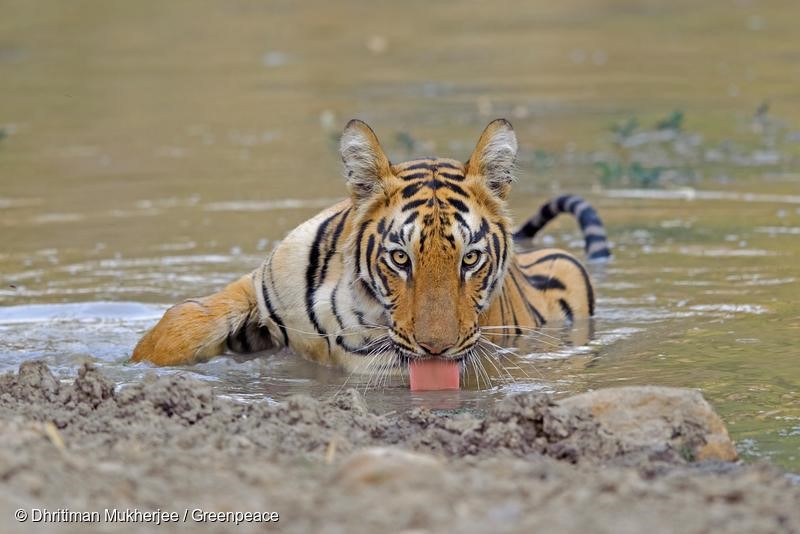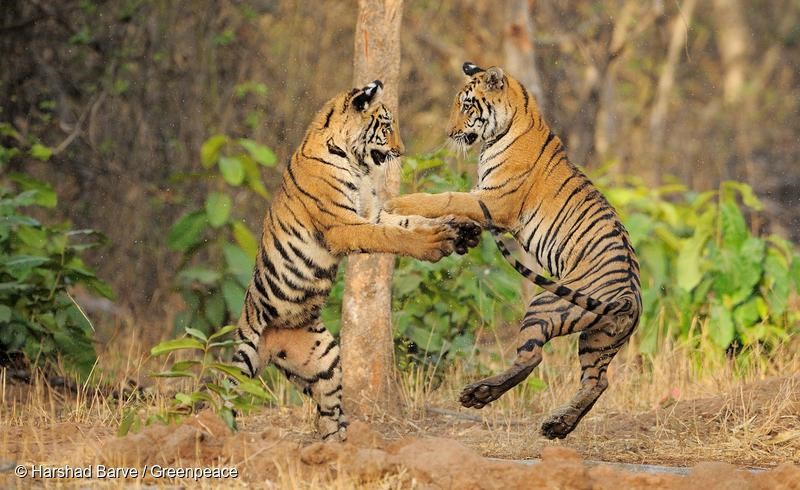
Project Tiger. Naam toh suna hi hoga.
Launched in 1973, “Project Tiger”, aimed to protect the habitat and population of India’s national animal. It found success with tiger populations doubling in 2018, 4 years ahead of the target year. Eventually forming its own administrative body – the National Tiger Conservation Authority (NTCA) – the Project led to awareness, education and policy changes, gradually establishing 53 tiger reserves in the country. In 2021, 14 of these reserves even achieved global accreditation for effective conservation of tigers.
Not just a royal species, tigers are critical predators in their ecosystem – responsible for balancing the population of herbivores and available vegetation. The presence of tigers in an ecosystem is often an indicator of its health and declining populations can signify one that is dying out. Conserving tigers is therefore critical to maintaining our forests and the ecosystem services they provide – temperature regulation, soil health, clean air and biodiversity.

Tiger numbers in India have shown consistent growth in the past decade. However, these tigers have lost 41% of their habitat in the last 20 years. The loss of critical habitat is largely attributed to a rise in infrastructure and ‘development’ projects being carried out in these areas. Mining is among the leading causes, with most of the existing and proposed projects in tiger-dense states with critical habitats like Odisha, Chhattisgarh, Madhya Pradesh and Jharkhand.
Other infrastructure projects like the upcoming Ken-Betwa river linking project also threatens a significant portion of critical tiger habitat. While the project aims to improve availability of water in the region, experts have pointed out that there is greater risk of flooding, changes in water patterns and biodiversity loss. When infrastructure does not take into account the importance of tiger habitat, it leads to a cascade of issues ultimately threatening ecosystems, tigers and humans.
With populations increasing and habitat decreasing, tigers have begun wandering into areas in close proximity to human settlements. This has not only led to deaths of tigers due to causes like electrocution but has also increased instances of human wildlife conflict, with 125 human deaths caused by the animal between 2019-2021. While vulnerable communities near forest areas are quick to blame uncontrolled increase of tiger populations, it has been made clear year after year that the main culprit of human-tiger conflicts is habitat loss and land diversion – making it a governance issue. Most of these communities are also directly or indirectly dependent on access to the forest for their livelihoods and survival. Determining critical tiger habitats therefore requires a community-led approach where concurrent ecological and social surveys are carried out to identify priority villages and employ adaptation tactics rooted in coexistence between humans and tigers.
On average, male and female tigers require an area of 210 sq. km area with prey to sustain. However, India hosts around 3000 tigers today with an average of only 1000 sq. km area of critical tiger habitat per tiger reserve. Unless authorities take concrete, focused measures to stop further deforestation and land diversion, tiger and human deaths will only increase. Recent studies have found that shrinking habitats are leading to inbreeding of tigers in India. This reduces genetic diversity of our tigers and threatens their chances of survival.
Although a majority of tiger deaths are cited to be caused by poaching, recent studies by IUCN state that the biggest threat to tigers in coming years will be climate change. This means, failing to stop their habitat from shrinking puts tigers in further danger and can render other conservation efforts fruitless.
Project Tiger’s success is measured in increasing tiger numbers in India, but it is now time to prioritize the habitat of these big cats in order to truly commit to their conservation and wellbeing.




Discussion
Greenpeace I salute your mission
This was a fascinating read. The way you weaved in real-life examples helped to bring the topic to life.
I really appreciate your balanced approach to this topic. It's refreshing to see an unbiased perspective.
The clarity in your writing is something I truly appreciate. This was easy to understand, yet detailed enough to cover the topic thoroughly.